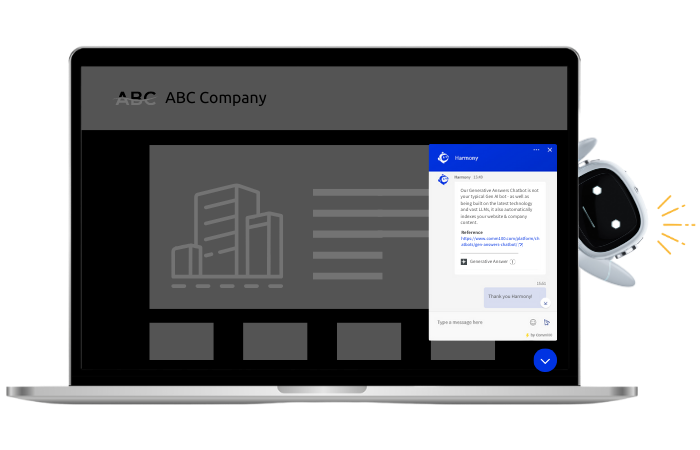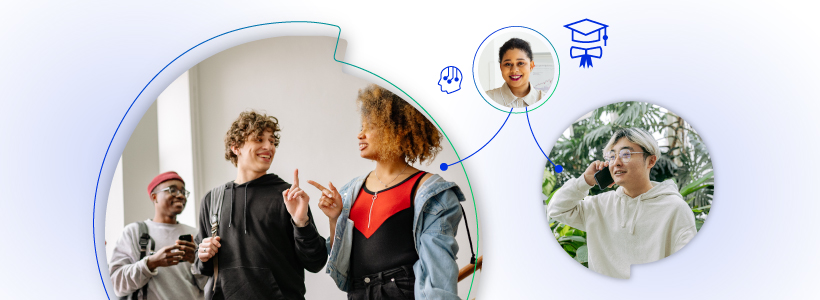Dyslexia should be a massive consideration in education, and making learning more accessible for those suffering from the disorder should be a priority for educational institutions. According to The Yale Center for Dyslexia, this condition impacts 20% of the American population and represents 80-90% of all learning disabilities in the country.
But despite its prevalence, not enough has been done within education to facilitate successful academic careers. Yale University states that only 34% of students with dyslexia graduate from college, demonstrating how much those with dyslexia are underserved.
Thankfully, changes are being made, and the implementation of technology to help those with dyslexia study and learn is becoming more commonplace. Assistive learning technology is one of the main avenues for people with this condition to get support, with live chat being a particularly useful tool. Here’s a deeper look at live chat and its role in supporting those with dyslexia.
How Does Dyslexia Impact Education?
Students with dyslexia face a much more challenging educational experience, and many people with learning disabilities fail to obtain any qualifications. Furthermore, only 40% of university students in the UK with dyslexia achieve a 2.1 grade or above, which equates to a mark of 60%, showcasing that those with dyslexia suffer globally. These statistics only focus on those that make it to higher education, and the number that reach this stage with the condition is low.
Additionally, because dyslexia makes studying much more challenging, dyslexic students may take longer than average to complete their education, making studying more expensive.
Fortunately, there are many means of financial assistance students can use to pay for college and manage the additional costs of their education. Scholarships, grants, student loans, and partnerships can all help pay tuition fees and cover living expenses, specialized support services, and accommodations, ensuring dyslexic students can focus on their studies without being overwhelmed by financial burdens.
Symptoms of Dyslexia
For a better understanding of why dyslexia can be so disruptive for those in education, here’s a look at some of the most common symptoms:
- Inconsistent spelling. This can impact a student’s ability to write essays and take notes during class and affect their ability to achieve high grades.
- Low reading level. Those with dyslexia struggle to interpret words and letters, making reading more difficult. A low reading level will impact a student’s ability to revise and obtain information.
- Communication issues. Students with dyslexia, especially younger children, will have speech problems. This can impact their ability to deliver presentations or even ask for assistance in class.
- Difficulty concentrating. Students who struggle to express their need for assistance may start to lose concentration and engagement with their education, potentially developing bad behavior as a result.
These symptoms impact education and can have devastating long-term effects if support isn’t provided. Dyslexia can cause an individual to have lower self-esteem and a lack of confidence in their abilities, inhibiting personal growth.
Without adequate support, those with dyslexia are more likely to make poor life choices. For example, around 50% of the prison population in Texas have dyslexia, a trend that assistive learning technology is helping to reduce.
What Is Live Chat?
Live chat is one of many assistive learning technologies that students with dyslexia can use to help them study and engage with educational material. With live chat, especially those powered by AI, dyslexia students can ask questions, search for information, and access support easily within a chat box, whether they’re on a website or an educational application.
Live chat can also be a function that connects higher education students with their lecturers, as it can be used as a messaging service that allows them to communicate at any time.
4 Ways Live Chat Can Make Education More Inclusive
Live chat has a lot of different functionality that dyslexic students can utilize, making it one of the most versatile assistive learning technologies. Here are some ways those in education can use the software to make education more inclusive.
One of the biggest things dyslexic students struggle with is spelling. AI-powered chatbots can help with this, as students will be able to copy and paste a written passage and get it proofread in real-time. This allows them to improve their spelling and grammar at any time, enabling those with dyslexia to self-monitor and quality-check their work.
In addition to proofreading entire passages, live chat can also be used to help improve vocabulary by suggesting better words and synonyms. This can allow dyslexic students to express themselves better, communicate clearly, and create more engaging written content.
Besides live chat, dyslexic students can use other advanced technology like speech recognition software, text-to-speech apps, touch typing hardware, and more to help with their writing.
2. It offers 24/7 support
Often in education, a dyslexic student only has access to support from staff and lecturers during school or college hours, making completing homework or after-school study much more challenging. This is no longer the case with live chat.
With the technology, dyslexic students can access support anytime, either by getting help through AI or by contacting a live agent who can help with queries. With 24/7 access, dyslexic students can build study routines that work around their lives and obtain support whenever needed.
As well as this, live chat can also be used to connect struggling dyslexic students with mental health support and college counseling, making it a great feature of the application.
When searching for specific information, such as statistics, to help with an essay, a dyslexic individual may become overwhelmed if there’s a lot of content to shift through on a website or module. This can be demotivating, cause stress, and make finding this information much harder.
With live chat functionality built into a website or learning application, a student can instead ask for the information they’re looking for within the chatbox, which will search the website to provide reliable information. This helps boost the accessibility of the content and allows students to engage with topics and subjects that interest them.
4. It builds confidence
Although getting support from teaching assistants and other professionals can help those with dyslexia, being tended to as someone that requires this support can impact self-esteem and confidence. Often, those with dyslexia don’t want to feel different or show that they’re struggling, so they may also not want to ask for support.
Live chat can fix this, as it’s a lot more discreet and independent. With this technology, students are empowered to request and find support whenever needed, giving them the agency to engage with their studies.
For example, a student can better keep up with a class or module by dipping into the live chat feature to help them out instead of asking for help in person. This prevents them from feeling isolated, aiding with their confidence.
Conclusion
Navigating school and education with dyslexia is challenging, as it’s often an environment not designed with this condition in mind. By using and implementing assistive learning technology like live chat in teaching, teachers can give those with dyslexia a better chance to succeed.
Dyslexia doesn’t mean students cannot learn; it just means they need different tools and methods to obtain information. Adopting live chat is one of the many steps educators can take to improve prospects and make learning more accessible.






